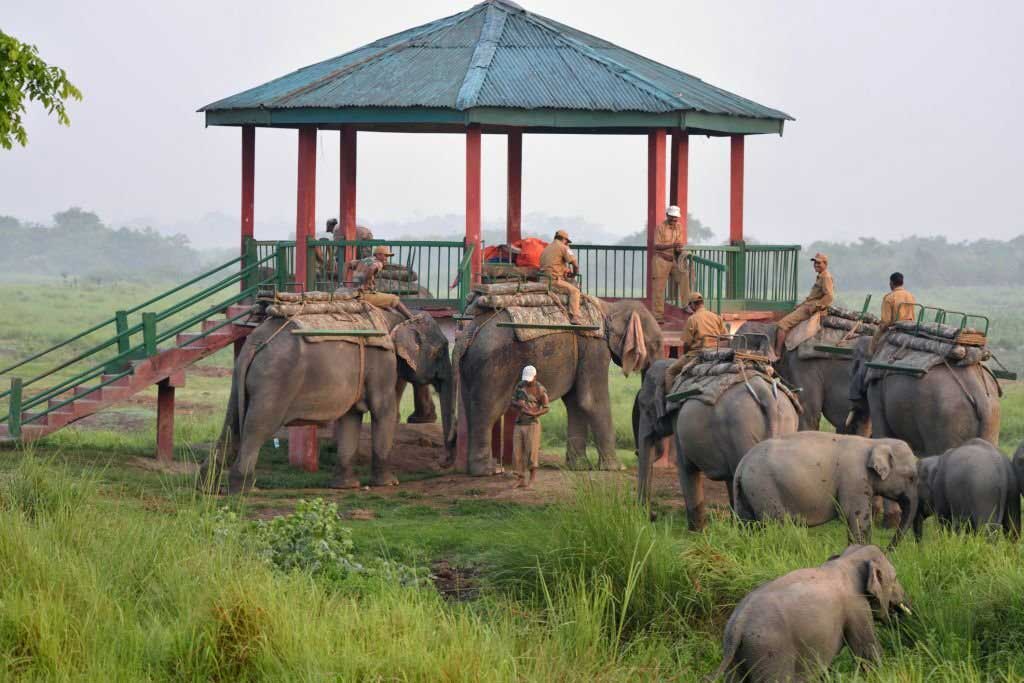Kaziranga National Park: A World Heritage Site Born of Conservation Excellence
Nestled in the heart of India’s northeastern state of Assam, the Kaziranga National Park stands as a sanctuary of biodiversity and a testament to conservation efforts. Recognized as a UNESCO World Heritage Site, this park has not only preserved the delicate balance of its ecosystem but has also garnered global recognition for its exceptional efforts.

A Glimpse into History:
The history of Kaziranga National Park dates back to the early 20th century when it was established as a protected area to safeguard the dwindling population of Indian one-horned rhinoceroses. The park’s diverse landscapes, including grasslands, wetlands, and dense forests, support an impressive array of wildlife, making it a crucial conservation site.
Date of Designation:
Kaziranga’s journey to global acclaim culminated on December 2, 1985, when it was designated as a UNESCO World Heritage Site. This recognition celebrated the park’s exceptional value in terms of both biodiversity conservation and environmental sustainability.
Reasons Behind its Designation:
The inclusion of Kaziranga National Park in the UNESCO World Heritage List can be attributed to several key reasons:
- Rare Biodiversity: The park is home to the largest population of the Indian one-horned rhinoceros, a species that was on the brink of extinction. Additionally, Kaziranga harbors a remarkable variety of flora and fauna, including tigers, elephants, wild water buffaloes, and various bird species.
- Conservation Success: Kaziranga’s successful conservation programs have led to a significant increase in the rhinoceros population. The park’s innovative approaches to anti-poaching efforts and habitat restoration have become a model for other conservation initiatives worldwide.
- Unique Ecosystem: The park’s distinct ecosystems, including grasslands and wetlands, contribute to its biodiversity. The dynamic interactions between the Brahmaputra River, seasonal flooding, and the diverse habitats foster a complex web of life rarely found elsewhere.
- Cultural Significance: The indigenous communities residing around Kaziranga, such as the Assamese Bodo people, have historically coexisted with the park’s wildlife. Their sustainable practices and cultural ties further emphasize the importance of conserving this unique landscape.
Impact of World Heritage Status:
The UNESCO World Heritage designation has yielded far-reaching impacts on Kaziranga National Park and its surroundings:
- Enhanced Conservation Efforts: The global recognition has catalyzed increased efforts to protect and conserve Kaziranga’s delicate ecosystem. It has spurred investments in technology, infrastructure, and manpower for effective anti-poaching measures and habitat preservation.
- Economic Development: The park’s World Heritage status has led to a surge in eco-tourism. This influx of visitors generates economic opportunities for local communities, encouraging them to engage in conservation-oriented activities.
- Global Awareness: The designation has heightened international awareness about the importance of preserving biodiversity and the need for responsible tourism. It fosters cross-border collaborations and knowledge sharing on conservation strategies.
Kaziranga National Park’s journey to becoming a UNESCO World Heritage Site symbolizes the triumph of conservation efforts in safeguarding our planet’s natural treasures. As it continues to thrive as a sanctuary of biodiversity and a model for sustainable coexistence, the park serves as an enduring reminder of the impact of collective dedication to preserving our world’s fragile ecosystems.




